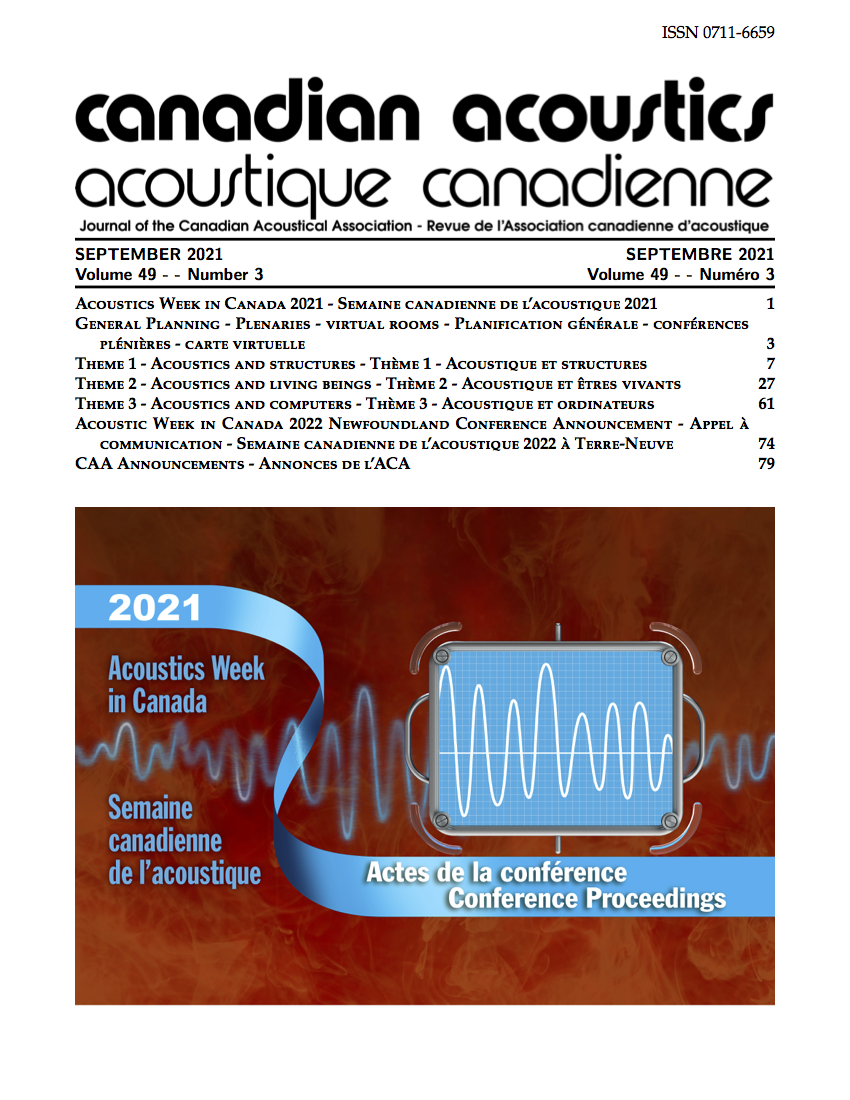3D Finite Element Model of the Human Thorax to Study its Low Frequency Resonance Excited by an Acoustic Harmonic Excitation onto the Chest Wall
Abstract
According to the 2019 Canadian cystic fibrosis (CF) annual report, 4344 patients suffer from CF, which represents an increase of 33.3 % in the last two decades. It is devastating by a build-up of excessive, thick, and sticky mucus, which causes obstruction of breathing. Physiotherapy based on a harmonic acoustic pressure applied onto chest wall is used for mucus drainage. One hypothesis behind this approach is that vibrations act on the viscoelastic, shear-thinning, and thixotropic properties of bronchial mucus, liquefying it to ease expectoration. This study aims to develop a numerical tool to study the vibrations induced in the lungs as a function of acoustic excitation. The method is based on a 3D numerical finite element model of the human thorax developed in the frequency domain using COMSOL 5.5 Multiphysics®. The realistic model based on computed tomography scans consists of the tracheobronchial tree, the lungs, the rib cage, the scapula, and the soft tissues. The numerical results present the vibratory harmonic responses (20-60 Hz) of the thorax when excited by a 28 mm radius and 160 dB external acoustic pressure. The chest-resonance frequency is obtained close to 28 Hz, which is consistent with reported experimental data.Additional Files
Published
How to Cite
Issue
Section
License
Author Licensing Addendum
This Licensing Addendum ("Addendum") is entered into between the undersigned Author(s) and Canadian Acoustics journal published by the Canadian Acoustical Association (hereinafter referred to as the "Publisher"). The Author(s) and the Publisher agree as follows:
-
Retained Rights: The Author(s) retain(s) the following rights:
- The right to reproduce, distribute, and publicly display the Work on the Author's personal website or the website of the Author's institution.
- The right to use the Work in the Author's teaching activities and presentations.
- The right to include the Work in a compilation for the Author's personal use, not for sale.
-
Grant of License: The Author(s) grant(s) to the Publisher a worldwide exclusive license to publish, reproduce, distribute, and display the Work in Canadian Acoustics and any other formats and media deemed appropriate by the Publisher.
-
Attribution: The Publisher agrees to include proper attribution to the Author(s) in all publications and reproductions of the Work.
-
No Conflict: This Addendum is intended to be in harmony with, and not in conflict with, the terms and conditions of the original agreement entered into between the Author(s) and the Publisher.
-
Copyright Clause: Copyright on articles is held by the Author(s). The corresponding Author has the right to grant on behalf of all Authors and does grant on behalf of all Authors, a worldwide exclusive license to the Publisher and its licensees in perpetuity, in all forms, formats, and media (whether known now or created in the future), including but not limited to the rights to publish, reproduce, distribute, display, store, translate, create adaptations, reprints, include within collections, and create summaries, extracts, and/or abstracts of the Contribution.


